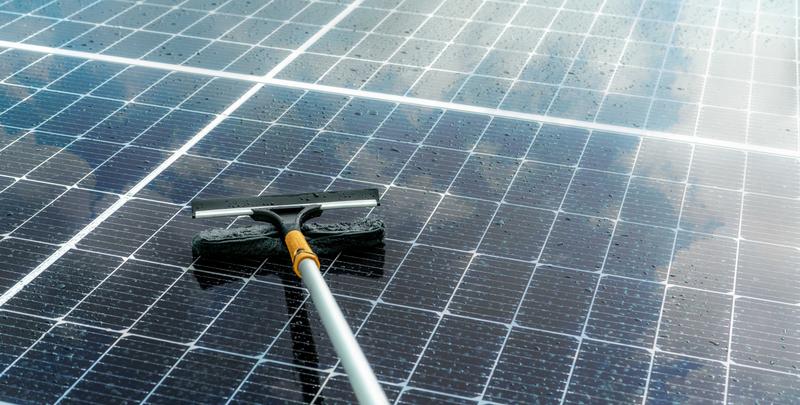
In case you’re seeking a high-effectiveness
Why Photo voltaic Panel Cleaning Issues
Solar panels capture energy at their most effective when clean up. Dust, pollen, hen droppings, and smog minimize efficiency—sometimes by twenty% or maybe more. Standard cleaning allows retain ideal overall performance, increase panel lifetime, and safeguard your expense.
Main Added benefits:
- Improved Electrical power output
- Decrease electricity costs
- Extended panel lifespan
- Decreased hazard of micro‑cracks as a result of thermal hotspots
Types of Solar Cleansing Resources
Picking out the correct Resource depends upon your setup, h2o availability, and preferred advantage. Categories incorporate:
- H2o‑run photo voltaic brush devices
- Portable solar panel cleaning kit bundles
- Pure drinking water cleansing units
- Rotary photo voltaic brushes and extension poles
Water Powered Solar Brush Programs
These brushes hook up with a h2o resource and spin while dispensing water, combining cleaning and lubrication in one action. The end result: spotless panels without scratching.
Important Characteristics:
- Built-in drinking water feed from the brush head
- Tender bristles safe for glass surfaces
- Rotary motion minimizes manual energy
- Mounts on extension poles for rooftop accessibility
Portable Solar Panel Cleaning Package
An entire
- Brush head (preset or rotating)
- Extension pole (adjustable lengths nearly six m)
- Hose adapters or speedy‑hook up fittings
- Pure‑drinking water tank or filtration program
- Delicate microfiber towels or squeegees
- Non‑abrasive cleaning solution (if authorized)
Advantages of All-in-One particular Kits:
- Start off cleaning with minimal setup
- Compact for storage or vacation
- Suitable with residential or professional photo voltaic arrays
Pure Water Photo voltaic Cleaning Methods
These units purify community drinking water—getting rid of minerals and Dust—so it gained’t leave scale or streaks. Pure drinking water empowers Skilled-quality benefits without having chemical substances.
How It really works:
- Pretreatment filtration (sediment, carbon, ion exchange)
- Final deionization or reverse‑osmosis phase
- Filtered water circulated by brush for cleaning
- Residue‑no cost drying—no spots or streaks remaining powering
Rotary Photo voltaic Brush & Extension Poles
For large photo voltaic arrays or commercial use, a power-rotating head with a telescoping extension pole can make cleansing productive and safe.
Positive aspects:
- Significantly less Actual physical energy, a lot quicker coverage
- Access roofs and floor‑mounted panels very easily
- Adjustable shaft lengths for different angles
- Common rapid‑hook up tips for equipment
Deal with Safety & Ideal Tactics
Cleaning solar panels requires heights and slippery surfaces—basic safety to start with:
- Use non‑conductive extension poles
- Steer clear of force washers that can crack glass
- Perform early or late to stop glare and warmth
- Have on grips and slip-resistant sneakers
- Notice local water‑use guidelines or limitations
Phase‑by‑Phase Cleaning Program
- Convert from the photo voltaic inverter or assure procedure is deactivated
- Rinse panels with small‑tension h2o
- Use a brush (or photo voltaic brush package) with drinking water feed
- Scrub gently in overlapping, linear passes
- Rinse extensively with clear water
- Dry with microfiber squeegee or gentle towel—only if needed
Deciding on the Ideal Photo voltaic Panel Cleaning Instrument
Think about your set up plus your drinking water accessibility:
Routine maintenance & Care Guidelines
- Flush hose and brush following Just about every use
- Shop dry, cleanse, and away from UV exposure
- Swap worn brush heads—and check bristle softness
- Inspect seals and connectors for leaks
- Exchange or clean filters in pure‑h2o techniques routinely
Eco-Helpful Cleansing Advantages
Proper cleansing prolongs photo voltaic panel performance and reduces Vitality squander. Working with h2o alone—with out soaps or chemical substances—can help maintain area ecology and avoids runoff air pollution.
How Photo voltaic Panel Cleansing Impacts ROI
Good maintenance using high quality brushes and kits keeps program effectiveness topped up, decreasing the payback time period and maximizing Vitality yield with time.
Expense Issues & Worth
- Water‑driven solar brushes are Expense-productive and sturdy
- Pure drinking water techniques demand upfront investment decision but supply constant, spot‑no cost cleansing
- Rotary brush kits Improve productivity—worthwhile for large installations
- Do it yourself kits preserve labor expenses; Experienced products and services Value a lot more but release your time
Common Uses of Solar Panel Brushes
- Residential rooftops
- Professional photo voltaic farms
- RV or cell installations
- Solar carports
- BIPV segments (constructing‑built-in photovoltaics)
Customer Testimonials & Use Situations
“This solar panel cleaning brush designed a noticeable variation within just minutes—dust long gone, no streaks, and our output enhanced!”
“Upgrading to the water‑driven photo voltaic brush saved hours of scrubbing. Coupled with a pure h2o program, the panels appeared brand new.”
FAQs About Photo voltaic Panel Cleansing
How often really should panels be cleaned?
Each and every six to twelve months, according to your local climate—much more generally in dusty or pollen-heavy areas.
solar cleaning brush
Can rain cleanse photo voltaic panels?
Rain assists but doesn’t remove Dust buildup or movie layers—manual cleaning yields greater general performance.
Can I use tap water?
Tap water may possibly go away mineral residue. A pure water photo voltaic cleansing procedure helps prevent recognizing.
Can cleansing destruction panels?
Provided that abrasive tools or higher-stress washers are utilised. Generally use smooth bristles, small-tension, and follow manufacturer guidelines.
Professional Tips for Photo voltaic Panel Entrepreneurs
- Clean up early early morning or evening to prevent thermal anxiety
- Keep track of output information—if efficiency drops, thoroughly clean panels
- Maintain panels angled—standing h2o encourages algae development if remaining far too extensive
- Rotate brush heads periodically to take care of even use
Conclusion: A Brush For each and every Need to have
No matter whether you’re seeking a cost-helpful
Examine the entire line of brushes and add-ons intended especially for solar cleaning at